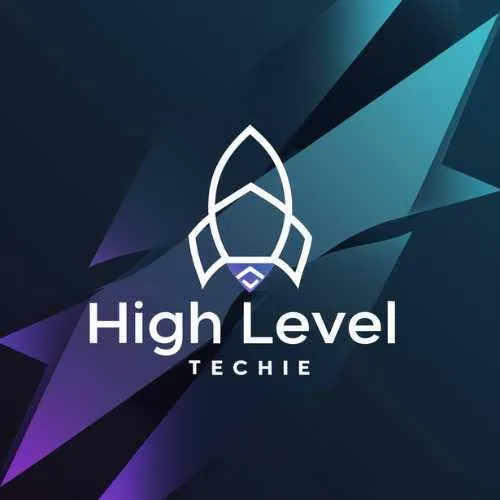
How to Build a Voice AI Bot for Dynamic Quotes Using GoHighLevel
Introduction
Voice AI bots are revolutionizing how businesses interact with customers. By automating tasks like data capture and quote generation, they enhance customer service efficiency and streamline workflows. In this detailed guide, we’ll explore how to create a Voice AI bot in GoHighLevel that captures customer details, calculates dynamic quotes, and even schedules appointments—all in one seamless process.
What is a Voice AI Bot for Dynamic Quotes?
A Voice AI bot is an intelligent agent that interacts with customers over the phone. In this use case, the bot:
Asks questions to capture relevant data (e.g., area size, flooring type).
Generates a quote based on the captured information.
Sends the quote to the customer via email.
Optionally schedules an appointment for on-site measurement.
This process reduces manual effort and improves the overall customer experience.
Key Features of the Voice AI Bot
Data Capture: Collects essential customer details, such as flooring type, area size, and additional services.
Dynamic Quote Calculation: Uses captured data to compute costs based on predefined values.
Email Communication: Sends a detailed quote and appointment confirmation via email.
Appointment Scheduling: Offers customers convenient times for on-site visits.
Step-by-Step Guide to Building the Voice AI Bot
1. Set Up the Voice AI Agent
Navigate to Sub Accounts Settings in GoHighLevel and select Voice AI Agents.
Create a new agent or modify an existing one.
Assign the agent a name, voice type, and an inbound call message (e.g., “Thank you for calling Elite Floors. How can I help you today?”).
2. Configure Agent Goals and Prompts
In the Agent Goals section:
Define Prompts:
Ask questions like:
What is the approximate area size (in square feet)?
What type of flooring do you prefer (hardwood, tile, carpet, vinyl)?
Do you require additional services (e.g., old flooring removal)?
Use a mix of GoHighLevel's default prompts and custom prompts for tailored interactions.
Capture Data Using Custom Fields:
Create custom fields for inputs like area size, flooring type, address, email, and additional services.
Store captured data into these fields for further processing.
3. Develop Workflows for Data Processing
Workflow 1: Convert Text Data to Numerical Values
Trigger: When the floor area text field is updated.
Use a ChatGPT action to convert text input (e.g., “two hundred”) into numerical format (e.g., 200).
Update the numerical custom field using GoHighLevel’s API and a webhook.
Workflow 2: Process Additional Services
Trigger: When the additional services field is updated.
Use conditions to check if additional services are selected:
If none, set a custom field value to 0 (no additional charges).
Otherwise, set the value to 1 (additional charges apply).
Workflow 3: Post-Call Workflow
Trigger: When the call ends.
Actions:
Notify the admin of captured data.
Send a thank-you email to the customer, informing them that a quote is on its way.
Add the customer to the final quote calculation workflow.
Workflow 4: Calculate Final Quote
Trigger: When added from the post-call workflow.
Steps:
Determine the preferred flooring material (e.g., hardwood, tile).
Calculate the flooring cost using area size and material price per square foot.
Compute additional charges (if any) by multiplying the area size with the service charge and additional service factor.
Add flooring cost and additional charges to generate the final quote.
Send the quote to the customer via email.
4. Email Template for Quotes
Your email should include:
Flooring material and area size.
Breakdown of flooring costs and additional charges.
Total estimated cost.
You can also customize this email into a formal estimate template for professional use.
5. Appointment Scheduling
Include an optional step where customers can book a free on-site measurement. The bot should:
Offer available dates and times.
Capture the customer’s preferred slot.
Confirm the booking via email.
Real-World Demo
Here’s how the bot interaction works in practice:
The customer calls the bot and answers questions about their flooring needs.
The bot captures details like flooring type, area size, and additional services.
The bot calculates a quote using workflows and sends it to the customer’s email.
If an appointment is booked, the bot confirms the schedule and updates the admin.
Challenges and Workarounds
Handling Text-to-Numerical Conversion:
Use ChatGPT or similar AI tools to standardize inputs into numerical formats.
Custom Field Updates:
For limitations in GoHighLevel’s UI, use API integrations to dynamically update fields.
Appointment Booking Conflicts:
Notify customers of unavailable slots and suggest alternatives.
Benefits of a Voice AI Bot for Your Business
Efficiency: Reduces manual workload by automating quotes and scheduling.
Customer Experience: Provides prompt responses and accurate information.
Scalability: Handles multiple inquiries simultaneously, perfect for growing businesses.
Conclusion
Building a Voice AI bot in GoHighLevel is a game-changer for businesses looking to automate customer interactions. From capturing data to generating quotes and scheduling appointments, this system streamlines operations and enhances customer satisfaction.
If you’re ready to implement a Voice AI bot or need help setting it up, reach out for guidance. The possibilities are endless, and with the right setup, your business can save time, improve accuracy, and deliver exceptional service.

